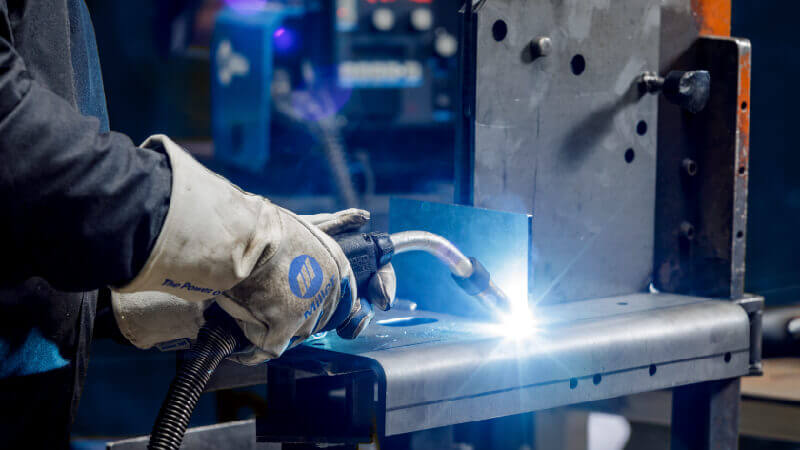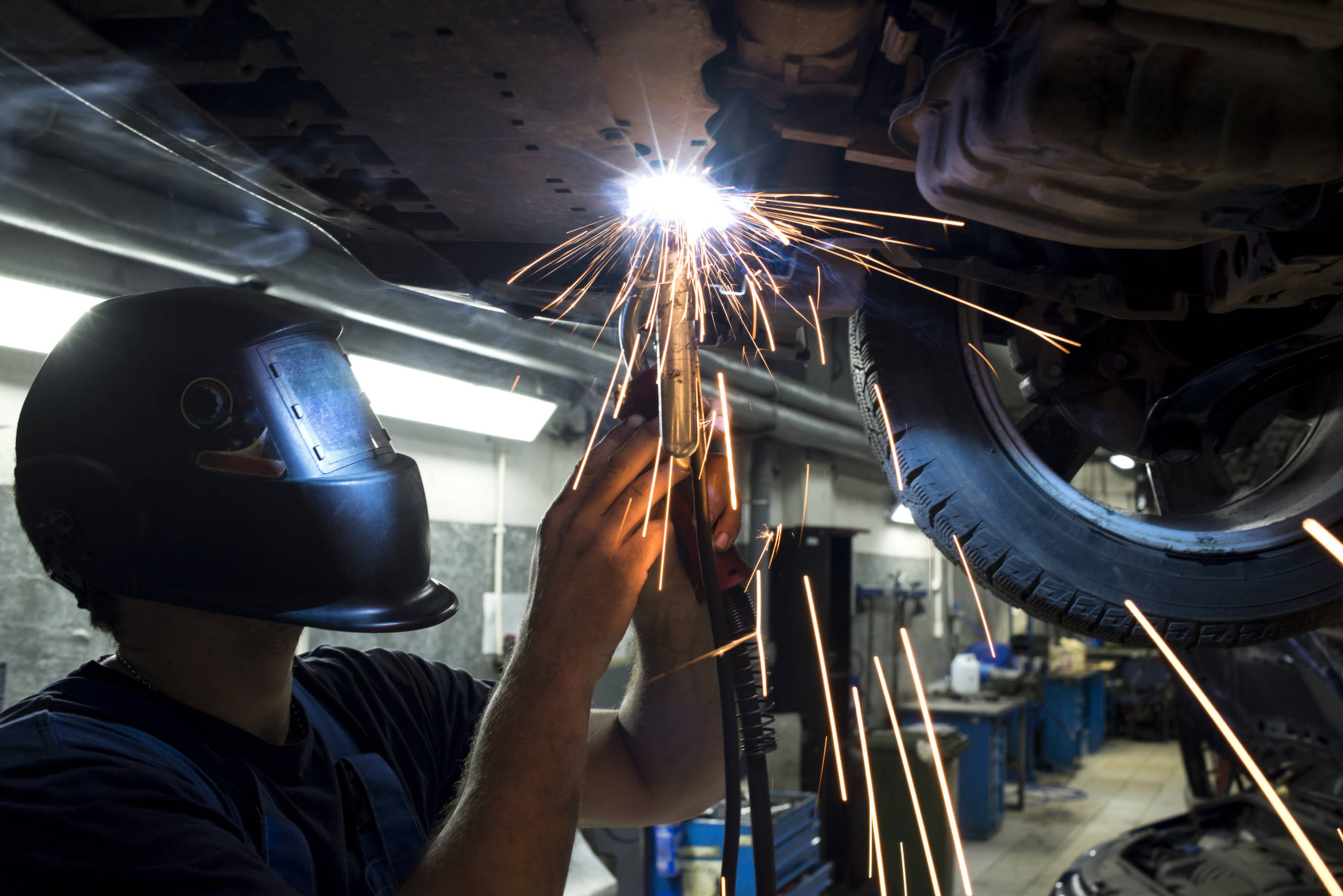How cracks form in welding and how Montana Mobile Welding and Repair solves them
Typical Welding Repair Work Issues and How to Address Them Properly
Welding repairs often encounter a range of concerns that can threaten the honesty of the last item. Common problems consist of insufficient penetration, porosity, and misalignment, to name a few. Each defect offers unique challenges that call for certain methods for resolution. Recognizing these problems is important for welders aiming to improve their results and abilities. This conversation will certainly discover these usual welding repair problems and efficient methods to resolve them.
Insufficient Penetration
Inadequate penetration occurs when the weld metal fails to totally fuse with the base product, resulting in weak joints and possible architectural failings. This issue often originates from insufficient heat input, inaccurate electrode angle, or inappropriate welding speed. Welders may run into poor infiltration due to a miscalculation of the necessary parameters for a particular product thickness or kind. Furthermore, contamination on the base material's surface can prevent reliable bonding, exacerbating the trouble. To deal with inadequate penetration, welders should ensure proper setups on their equipment and preserve a tidy work surface. Routine assessment of welds is advised to identify any type of shortages early, allowing for prompt corrections and the avoidance of endangered structural honesty in welded assemblies.
Porosity
Porosity is a common defect in welded joints that shows up as tiny gas bubbles trapped within the weld steel. This defect can jeopardize the stability of the weld, causing lowered toughness and potential failure under anxiety. Welding. Porosity commonly develops from contamination, dampness, or inappropriate welding strategies, which allow gases to run away right into the molten weld pool. To attend to porosity, welders ought to assure correct surface area preparation, maintain a clean functioning environment, and utilize ideal welding parameters. Additionally, selecting the ideal filler product and protecting gas can alleviate gas entrapment. Routine assessment and screening of welds can assist identify porosity early, ensuring prompt rehabilitative actions are taken, therefore maintaining the quality and reliability of the bonded framework
Misalignment
Imbalance in welding can emerge from numerous variables, consisting of incorrect setup and thermal growth. Recognizing the source is vital for effective resolution. Numerous correction strategies are offered to realign components and ensure architectural honesty.
Sources of Imbalance
Welding misalignment commonly originates from a range of underlying issues that can jeopardize architectural integrity. One key cause is inappropriate fit-up of elements prior to welding, which can cause gaps and unequal surface areas. Variants in thermal growth throughout the welding procedure can likewise cause distortion, particularly if the materials being joined have various coefficients of development. Furthermore, poor clamping and fixturing may fail to hold elements firmly in place, leading to movement during welding. Inadequately conserved tools, consisting of welding makers and devices, may present variances in the weld bead, additional adding to imbalance. Driver error, stemming from inadequate training or experience, can additionally play a significant function in developing misaligned welds.

Improvement Techniques Readily Available
Attending to imbalance efficiently calls for a mix of rehabilitative techniques customized to the details concerns handy. One typical approach is the use of jigs or fixtures to hold elements in the right placement during welding, ensuring constant placement. Furthermore, preheating the products can help minimize distortion and improve fit-up. For significant misalignment, mechanical adjustment techniques, such as making use of hydraulic jacks or clamps, can be employed to remedy the setting prior to welding. Post-weld warm therapy may additionally be necessary to relieve anxieties triggered by imbalance. Ultimately, cautious assessment and adjustment during the arrangement stage can stop imbalance issues from becoming significant problems, promoting a smoother welding procedure and improving total structural stability.
Distortion
Distortion is a common obstacle in welding that can develop from numerous factors, consisting of irregular home heating and air conditioning. Understanding the root causes of distortion is essential for carrying out reliable prevention methods. Resolving this concern not just boosts architectural integrity however also enhances the overall high quality of the weld.
Reasons of Distortion
When subjected to the extreme heat of welding, materials usually go through modifications that can lead to distortion. This sensation largely develops from thermal development and tightening during the welding procedure. As the weld location warms up, the material broadens; upon air conditioning, it acquires, which can develop interior stresses. On top of that, irregular home heating throughout a work surface can exacerbate these tensions, resulting in bending or flexing. The kind of material likewise plays a substantial function; steels with varying thermal conductivity and coefficients of expansion may react in different ways, leading to uncertain distortions. Furthermore, bad joint layout and insufficient fixturing can add to imbalance during welding, boosting the possibility of distortion. Comprehending welding stainless steel these causes is vital for effective welding repair and avoidance techniques.
Avoidance Techniques
Efficient prevention strategies for distortion during welding emphasis on regulating warmth input and making sure proper joint layout. Preserving a regular warm input aids to lessen thermal expansion and contraction, which can lead to distortion. Using strategies such as pre-heating the work surface can additionally minimize the temperature level gradient, advertising consistent heating. In addition, choosing appropriate joint layouts, such as T-joints or lap joints, can enhance stability and minimize stress focus. Carrying out proper fixturing to safeguard the workpieces in place additionally aids in preserving placement during the welding procedure. Staggered welding series can disperse heat much more uniformly, avoiding local distortion. By applying these techniques, welders can considerably decrease the possibility of distortion and improve the total top quality of their welds.
Splitting
Splitting is a typical problem run into in welding repair services, usually resulting from various elements such as incorrect cooling rates, material selection, or insufficient joint prep work. The incident of fractures can significantly compromise the stability of the weld, resulting in prospective failings during operation. To resolve this concern, welders need to initially examine the origin triggers, guaranteeing that materials are compatible and appropriately picked for the particular application. Furthermore, managing the cooling price during the welding procedure is crucial; rapid air conditioning can generate stress and result in fracturing. Proper joint style and preparation additionally contribute to decreasing the risk. Executing these strategies can improve weld high quality and resilience, eventually decreasing the possibility of splitting in ended up weldments.

Insufficient Combination
A substantial concern in welding repair services is incomplete blend, which happens when the weld steel does not adequately bond with the base product or previous weld passes - Welding. This flaw can cause weak points in the joint, possibly endangering the stability of the welded structure. Factors contributing to insufficient combination include not enough warmth input, incorrect welding strategy, and contamination of the surface areas being signed up with. To resolve this concern effectively, welders ought to ensure correct pre-weld cleaning and surface preparation, along with adjust their welding parameters to attain appropriate infiltration and blend. Routine examination during the welding procedure can also assist recognize incomplete combination early, allowing for timely corrective steps to improve the overall high quality of the weld
Overheating
While welding repair services can improve architectural integrity, overheating offers a considerable difficulty that can bring about product degradation. Too much warmth during welding can modify the mechanical residential or commercial properties of steels, leading to minimized strength, increased brittleness, and warping. This phenomenon is particularly critical in high-stress applications where structural integrity is extremely important. Recognizing getting too hot can entail aesthetic inspections for staining or distortion, in addition to keeping an eye on temperature level during the welding process. To mitigate the dangers connected with getting too hot, welders should utilize ideal methods, such as regulating warmth input, readjusting travel rate, and using ideal filler materials. look at this site Furthermore, implementing pre- and post-weld heat therapies can assist recover product properties and enhance the total top quality of the repair work, ensuring long-term efficiency and security.
Frequently Asked Questions
What Are the Usual Indications of a Welding Defect?

Just How Can I Evaluate My Welds for High quality?
To evaluate welds for quality, one can use visual inspections, ultrasonic screening, and radiographic approaches. Each strategy assures architectural integrity, determines problems, and validates adherence to defined requirements, eventually boosting the reliability of the bonded joints.
What Security Safety Measures Should I Take While Welding?
When welding, one ought to prioritize safety by putting on proper personal safety equipment, making sure appropriate air flow, protecting combustible products away, preserving a clean work space, and understanding surroundings to stop mishaps and injuries.
Can I Repair a Weld Without Redesigning the Entire Joint?
Fixing a weld without renovating the whole joint is possible, depending upon the damage (Belgrade Fabrication). Techniques such as grinding, including filler product, or utilizing a welding procedure can efficiently address particular defects while protecting the surrounding structure
What Devices Are Essential for Effective Welding Repairs?
Necessary devices for reliable welding fixings include a welding device, wire brush, mill, protective equipment, clamps, and filler materials. Each device plays an essential role in making sure high quality and safety throughout the repair service procedure. Porosity commonly emerges from contamination, dampness, or inappropriate welding methods, which enable gases to leave into the molten weld swimming pool. Improperly maintained tools, consisting of welding devices and devices, might present variances in the weld bead, additional contributing to misalignment. When subjected to the intense warm of welding, products typically go through adjustments that can lead to distortion. Cracking is a common problem run into in welding repair services, frequently resulting from different aspects such as improper cooling rates, material choice, or poor joint prep work. A considerable problem in welding fixings is insufficient combination, which happens when the weld steel does not sufficiently bond with the base product read what he said or previous weld passes.